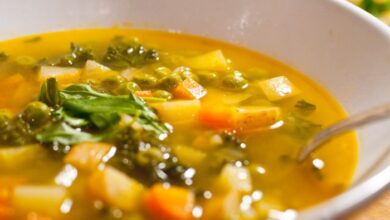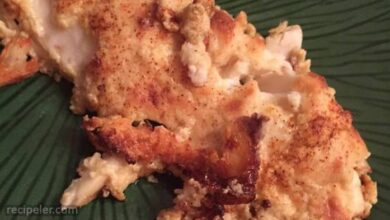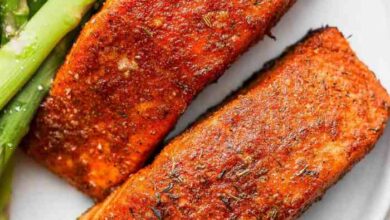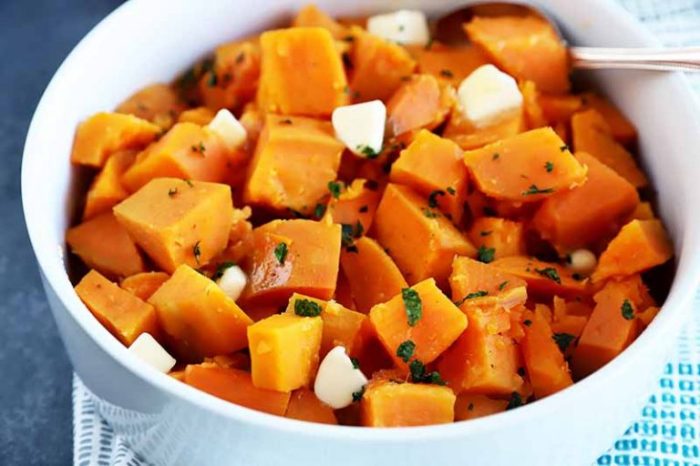
Pressure Cooker Sweet Potatoes: Fast & Flavorful
Pressure cooker sweet potatoes are a game-changer for anyone looking for a quick and easy way to prepare this versatile root vegetable. Forget the long baking times and messy oven clean-up – pressure cooking sweet potatoes delivers perfectly tender and flavorful results in a fraction of the time.
Whether you’re a seasoned pressure cooker pro or just starting out, this guide will walk you through everything you need to know, from choosing the right sweet potatoes to mastering different pressure cooking techniques. We’ll also explore a variety of flavor variations and recipes to inspire your culinary creativity.
Introduction to Pressure Cooking Sweet Potatoes
Sweet potatoes are a versatile and nutritious root vegetable that can be enjoyed in various ways. Whether you’re making mashed sweet potatoes, sweet potato fries, or a sweet potato casserole, pressure cooking offers a faster and more efficient way to prepare them.Pressure cooking sweet potatoes is a great alternative to traditional methods like baking or boiling, as it significantly reduces cooking time while preserving their flavor and nutrients.
Types of Pressure Cookers
Pressure cookers come in various styles and sizes, each with its unique features and benefits. Here’s a brief overview of the most common types:
- Stovetop Pressure Cookers: These are traditional pressure cookers that are placed on the stovetop and have a manual locking mechanism. They are generally affordable and reliable.
- Electric Pressure Cookers: Also known as multi-cookers, these devices offer more features and convenience. They have built-in heating elements and automatic pressure release mechanisms. Popular brands include Instant Pot and Ninja Foodi.
Choosing the Right Sweet Potatoes
The secret to perfectly cooked sweet potatoes in your pressure cooker lies in selecting the right variety. Sweet potatoes come in a range of colors, shapes, and flavors, each with its own unique characteristics. Choosing the right variety can make a world of difference in the taste and texture of your final dish.
Sweet Potato Varieties, Pressure cooker sweet potatoes
Understanding the different types of sweet potatoes and their characteristics will help you make an informed choice for your pressure cooker recipe.
- Orange-fleshed sweet potatoesare the most common type. They have a vibrant orange flesh, a sweet and slightly earthy flavor, and a moist and tender texture. Popular varieties include ‘Beauregard’, ‘Jewel’, and ‘Covington’.
- Purple-fleshed sweet potatoesoffer a stunning visual appeal and a slightly more intense flavor than their orange counterparts. Their flesh ranges from deep purple to a reddish-purple hue. Some varieties, like ‘Purple Yam’ and ‘Okinawa Purple’, have a slightly starchy texture.
- White-fleshed sweet potatoes, sometimes called ‘white yams’, have a mild, almost nutty flavor and a firm, dense texture. They are often used in savory dishes due to their subtle sweetness. Examples include ‘White Yam’ and ‘Ube’.
Selecting Ripe and High-Quality Sweet Potatoes
Choosing ripe and high-quality sweet potatoes is crucial for optimal results in your pressure cooker.
- Look for firm, smooth sweet potatoeswith no soft spots, bruises, or signs of decay. Avoid potatoes with wrinkles or shriveled skin.
- Check the stem end. A fresh sweet potato will have a firm, green stem end. A brown or withered stem end indicates that the potato is past its prime.
- Avoid sweet potatoes with sprouts. Sprouts indicate that the potato is starting to spoil.
- Select sweet potatoes that are heavy for their size. This is a good indicator of moisture content and freshness.
Pressure Cooking Techniques
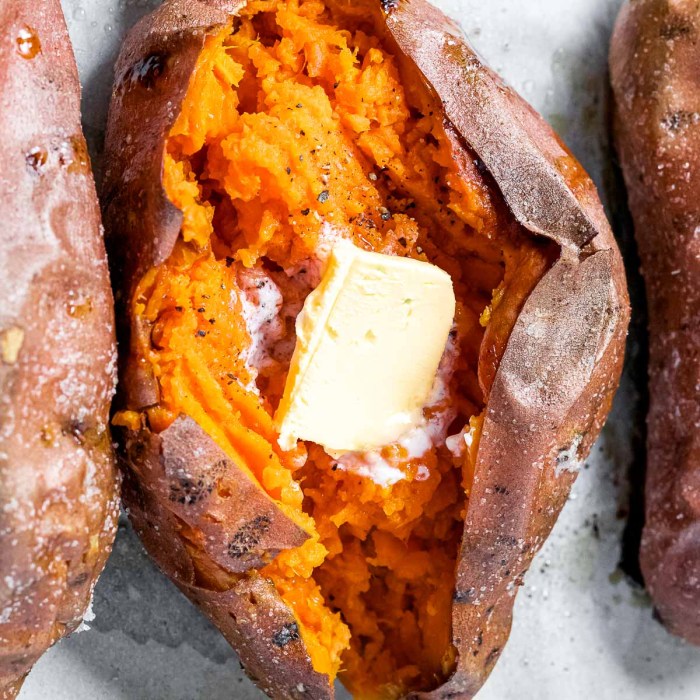
Pressure cooking sweet potatoes is a simple and efficient way to achieve perfectly tender and flavorful results. The high pressure environment within the pressure cooker allows for faster cooking times compared to traditional methods, while still preserving the sweet potatoes’ natural sweetness and nutrients.
Pressure Cooking Sweet Potatoes: Step-by-Step Guide
Here’s a detailed guide on how to pressure cook sweet potatoes:
1. Prepare the Sweet Potatoes
Wash and peel the sweet potatoes, then cut them into uniform-sized pieces. This ensures even cooking and prevents some pieces from overcooking while others remain undercooked.
2. Add Liquid
Add a small amount of liquid, such as water or broth, to the pressure cooker pot. This helps create steam and prevents the sweet potatoes from sticking to the bottom.
3. Season
Season the sweet potatoes with your favorite spices, such as salt, pepper, cinnamon, nutmeg, or ginger.
4. Pressure Cook
Secure the pressure cooker lid and bring the pressure cooker to high pressure. Once the pressure cooker reaches high pressure, reduce the heat to maintain the pressure.
5. Cooking Time
The cooking time for sweet potatoes in a pressure cooker depends on the size of the pieces and the type of pressure cooker. Generally, it takes around 5-8 minutes for small pieces of sweet potatoes to cook thoroughly.
6. Natural Release
After the cooking time is complete, allow the pressure to release naturally for 10-15 minutes. This allows the sweet potatoes to cook more evenly and prevents them from becoming mushy.
7. Quick Release
For a quicker release, you can manually release the pressure after the cooking time. However, this may result in slightly less tender sweet potatoes.
8. Serve
Once the pressure is released, carefully open the pressure cooker lid and check if the sweet potatoes are tender. If needed, cook for a few more minutes.
Pressure Settings and Cooking Times
The pressure setting and cooking time for sweet potatoes are crucial for achieving the desired texture and flavor.* Pressure Setting:Most pressure cookers have a high and low pressure setting. High pressure is generally recommended for cooking sweet potatoes as it allows for faster cooking times.
Cooking Time
The cooking time for sweet potatoes varies depending on the size of the pieces and the type of pressure cooker. Generally, small pieces of sweet potatoes take about 5-8 minutes to cook thoroughly at high pressure.
Natural Release vs. Quick Release
The method of pressure release after cooking affects the texture of the sweet potatoes.* Natural Release:Natural release involves allowing the pressure to release naturally for 10-15 minutes. This method results in a more tender and less mushy texture.
Quick Release
Quick release involves manually releasing the pressure after the cooking time. This method is faster but may result in slightly less tender sweet potatoes.
Flavor Variations and Recipes
The beauty of pressure-cooked sweet potatoes lies in their versatility. You can easily adapt them to suit various palates and preferences, creating both sweet and savory dishes. From classic sweet potato mash to innovative curries, the possibilities are endless.
Sweet Potato Recipes
Sweet potato recipes often feature a touch of sweetness, enhanced by spices and other ingredients. Here are some popular options:
- Sweet Potato Mash with Brown Sugar and Cinnamon:A classic comfort food, this recipe combines the sweetness of brown sugar with the warmth of cinnamon. Simply mash the cooked sweet potatoes, add a tablespoon of brown sugar and a pinch of cinnamon, and mix well. This mash is perfect as a side dish for roasted meats or poultry.
- Sweet Potato Pie:A Thanksgiving favorite, sweet potato pie offers a delicious blend of sweet and savory flavors. It is typically made with a flaky crust, a creamy filling of mashed sweet potatoes, spices like cinnamon, nutmeg, and ginger, and often topped with a meringue or whipped cream.
- Sweet Potato Bread:This moist and flavorful bread incorporates mashed sweet potatoes, spices, and often nuts or raisins. It is a popular breakfast or snack option and can be enjoyed with butter, jam, or cheese.
Savory Sweet Potato Recipes
Savory sweet potato recipes utilize the natural sweetness of the potato to create flavorful dishes that can be enjoyed as main courses or side dishes. Here are a few examples:
- Sweet Potato Curry:A vibrant and flavorful dish, sweet potato curry combines the sweetness of the potato with the heat of spices like turmeric, cumin, and coriander. The curry can be made with coconut milk for a creamy texture and often includes other vegetables like chickpeas or green beans.
- Sweet Potato and Black Bean Chili:A hearty and satisfying meal, sweet potato and black bean chili combines the sweetness of the potato with the richness of black beans and a variety of spices. It is a great source of protein and fiber and can be served with toppings like sour cream, cheese, or avocado.
- Sweet Potato and Lentil Soup:A warm and comforting soup, sweet potato and lentil soup is packed with protein and fiber. The sweetness of the potato complements the earthy flavor of lentils and the addition of spices like cumin and coriander adds depth to the dish.
Serving and Storage: Pressure Cooker Sweet Potatoes
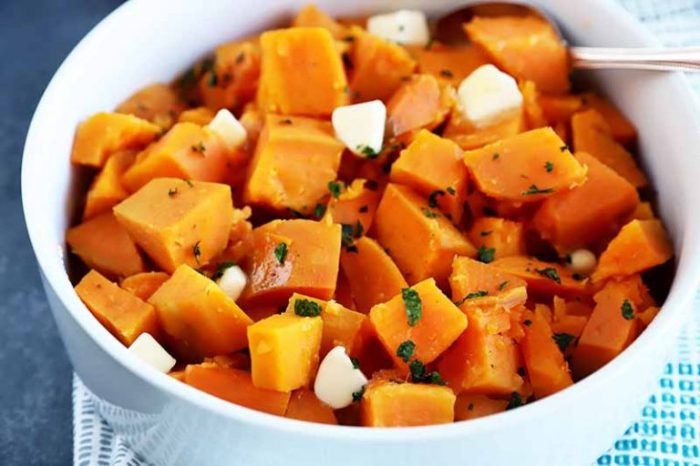
Pressure-cooked sweet potatoes are a versatile ingredient that can be enjoyed in many ways. Whether you prefer them as a side dish, main course, or dessert, there are countless options to explore. Additionally, their long shelf life makes them perfect for meal prepping or using in various recipes throughout the week.
Serving Options
Pressure-cooked sweet potatoes offer a wide range of serving possibilities. Here are some ideas:
- As a Side Dish:Serve them alongside grilled meats, roasted vegetables, or hearty salads. Their sweetness complements savory dishes beautifully.
- Main Course:Combine them with black beans, corn, and spices for a flavorful vegetarian chili.
- Dessert:Enjoy them as a simple sweet treat topped with whipped cream, cinnamon, or a drizzle of maple syrup.
- Salads:Add them to salads for a boost of sweetness and fiber.
- Soups:Puree them into soups for a creamy and flavorful base.
Storage
Proper storage is essential for preserving the freshness and flavor of cooked sweet potatoes. Here are some tips:
- Refrigeration:Store cooked sweet potatoes in an airtight container in the refrigerator for up to 4 days.
- Freezing:For longer storage, freeze cooked sweet potatoes in an airtight container or freezer-safe bag for up to 3 months.
Repurposing Leftovers
Leftover pressure-cooked sweet potatoes can be easily incorporated into various dishes. Here are some ideas:
- Sweet Potato Hash:Combine leftover sweet potatoes with diced onions, peppers, and spices for a hearty breakfast or brunch dish.
- Sweet Potato Toast:Slice cooked sweet potatoes and toast them in a pan or oven for a healthy and delicious alternative to bread.
- Sweet Potato Pancakes:Mash leftover sweet potatoes and combine them with flour, eggs, and spices for a sweet and satisfying breakfast treat.


